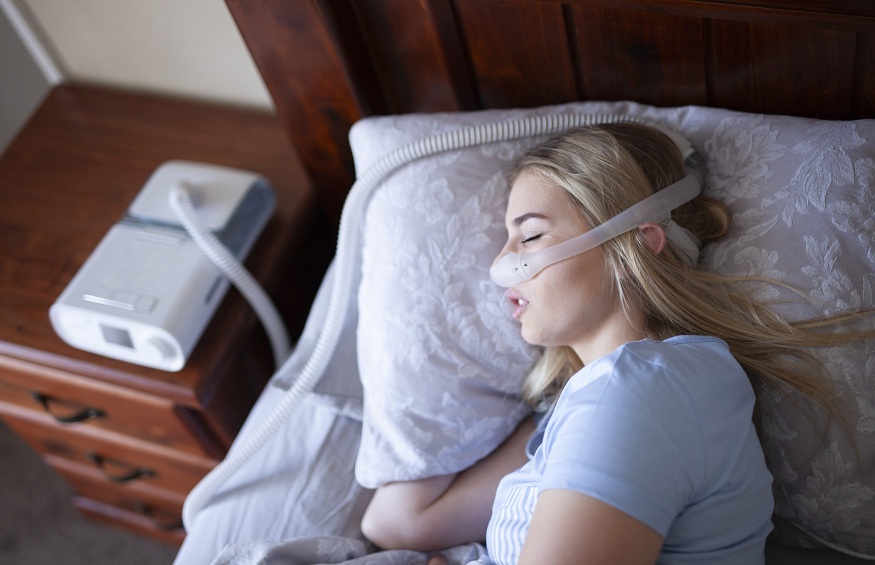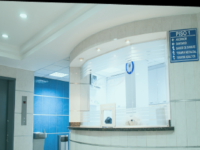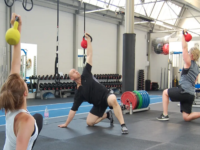How to Pick the Right CPAP Mask for Your Sleep Position

Sleep apnea is a respiratory problem that affects millions of people in the United States, many of whom are treated with a continuous positive airway pressure (CPAP) machine. Because CPAP therapy necessitates the use of a mask, many people assume that CPAP users must sleep on their backs because the mask is too bulky to sleep on their side or stomach comfortably. CPAP masks come in a variety of styles, some of which are thicker than others. While some CPAP users are required to wear a certain mask, others have the option of selecting a mask based on their preferred sleeping position.
When picking a CPAP mask, it’s critical to listen to your sleep doctor’s recommendations. Speak with them before switching mask types to discover more about whether your preferred option will work for you. Each mask is designed in a certain way for a reason, and not all masks are suitable for all CPAP users.
How to Pick the Right CPAP Mask for Your Sleep Position
Full-face, nasal, and nasal pillow masks are the three most prevalent CPAP mask styles. The most bulky masks are full-face masks, which cover both the nose and the mouth, whereas nasal masks just cover the nose. Nasal pillow masks are the least noticeable since they just cover the nostrils and lack a rigid shell.
Because CPAP masks require a tight seal to prevent air leaks, sleeping in a position that presses on the mask is not only unpleasant, but it can also jeopardise the efficacy of your therapy. The headgear on a CPAP mask can also disrupt sleep, especially if it has harsh plastic buckles or stiff anchor straps. When picking a CPAP mask, think about the mask’s footprint — length, breadth, and depth — as well as where the headgear lays on your face. The objective is to find a mask that is both functional and comfortable to sleep in.
Side Sleepers’ CPAP Masks
Because gravity does not influence your airway as much as it does while resting on your back or stomach, lying on your side is one of the greatest postures for sleep apnea therapy. Unfortunately, finding the proper CPAP mask for side sleepers can be difficult.
Because their low profile sits higher than the cushion, nasal pillow masks are a suitable alternative for side sleepers who can handle them. (Although some side sleepers press their faces on the pillow, nasal pillow masks typically maintain their seal.) Nasal masks, which cover the entire or a portion of the nose, are another alternative that many side sleepers find useful. Models with good seals, as well as soft and adjustable headgear, are the best. Even with these characteristics, side sleepers may still need a CPAP-friendly cushion to support the thickness of even a nasal mask.
Back Sleepers’ CPAP Masks
CPAP users who sleep on their backs have a wide range of mask options, since this posture easily fits even full-face masks. While sleeping on your back may be the most comfortable position if you use a CPAP mask, gravity can induce airway collapse. If your doctor is aware that you sleep on your back and has not advised you to change positions, you will most likely be satisfied with any mask that is effective and meets your other demands. The posture also makes it harder to remove your mask, however single-strap headgear may be problematic for certain back sleepers.
Sleep apnea is a respiratory problem that affects millions of people in the United States, many of whom are treated with a continuous positive airway pressure (CPAP) machine. Because CPAP therapy necessitates the use of a mask, many people assume that CPAP users must sleep on their backs because the mask is too bulky to sleep on their side or stomach comfortably. CPAP masks come in a variety of styles, some of which are thicker than others. While some CPAP users are required to wear a certain mask, others have the option of selecting a mask based on their preferred sleeping position.
When picking a CPAP mask, it’s critical to listen to your sleep doctor’s recommendations. Speak with them before switching mask types to discover more about whether your preferred option will work for you. Each mask is designed in a certain way for a reason, and not all masks are suitable for all CPAP users.
What Are the Prices of CPAP Machines?
Full-face, nasal, and nasal pillow masks are the three most prevalent CPAP mask styles. The most bulky masks are full-face masks, which cover both the nose and the mouth, whereas nasal masks just cover the nose. Nasal pillow masks are the least noticeable since they just cover the nostrils and lack a rigid shell.
Because CPAP masks require a tight seal to prevent air leaks, sleeping in a position that presses on the mask is not only unpleasant, but it can also jeopardise the efficacy of your therapy. The headgear on a CPAP mask can also disrupt sleep, especially if it has harsh plastic buckles or stiff anchor straps. When picking a CPAP mask, think about the mask’s footprint — length, breadth, and depth — as well as where the headgear lays on your face. The objective is to find a mask that is both functional and comfortable to sleep in.
Stomach Sleepers’ CPAP Masks
Stomach sleeping is the most uncommon sleeping position, and those who sleep on their stomachs have special considerations when selecting a CPAP mask. Most masks push against the face in this position, producing pain and frequent air leaks. Depending on the size of your mask, it may pull your head into a posture that puts strain on your neck and causes discomfort or stiffness the next day.
Most people can only sleep on their stomach if they use a nasal pillow mask because of these considerations. Nasal pillows are perfect for this because of their low profile, since they are unlikely to become dislodged or cause pain regardless of your sleeping position. Even those who wear a nasal pillow mask should make sure their pillow can fit the mask. Some masks also include tubes that run down the temples, which might impede airflow depending on your posture and pillow hardness.
CPAP Masks: Where Can You Buy Them?
A prescription is required for CPAP masks, just as it is for CPAP machines. Despite this, there are a variety of places to get your CPAP mask. A prescription is still required by online sellers, which they generally verify by having you upload or fax the prescription. You will be able to make your purchase after your prescription has been authorised.
Online merchants often offer the largest range of CPAP masks, although local medical supply stores are also popular and may be more convenient if you need a mask right away. Finally, a limited number of CPAP masks are sold by several sleep clinics and experts. Although their costs are often higher, buying through your sleep expert helps them to keep a closer track on your therapy.
Better Mask Fit with a CPAP Pillow
Not all CPAP users are able to use all types of CPAP masks, and your choice of CPAP mask should be based on your sleep specialist’s recommendations. A CPAP cushion could be a good option if the mask you have to wear makes it impossible to sleep in your favourite sleeping position. Even while sleeping on your side, these pillows are designed to support masks — especially thicker masks — better than a regular cushion. They may also provide greater cervical support, depending on the type, to prevent you from dislodging your mask or having neck strain.
For more information, visit: https://bestrecheck.com/






